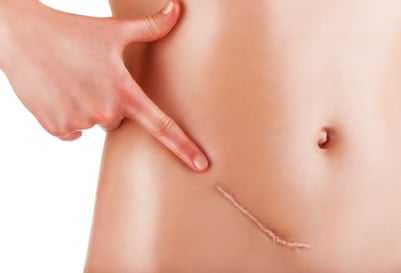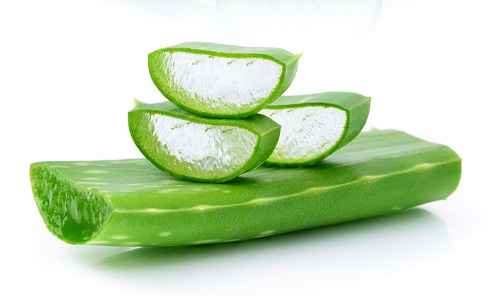
It doesn't take much to pick up a scar and it's hardly the sort of thing we like to show off. But it is possible to make them less visible....
Though we tend not to think of it as an organ, our skin is actually the largest organ in the body. So it's no surprise that most of us have picked up a scar at some point in our lives. Whether down to injury or surgery, a scar is the result of the body's natural healing process. Once the wound or cut is 'repaired' (often with stitches), we lay down collagen fibres (a type of protein) to replace the damaged tissue.
Collagen continues to be produced for several months, often leading to a raised, lumpy, red scar. Over time, this process slows and the scar gradually becomes smoother and paler. Scarring relates to the depth of the cut. This explains why some injuries heal without scarring, even if they're large.
Will my scar disappear?
All scars will fade with time, though they won't disappear, however, how long this takes depends on several factors: the
kind of scar it is, where it is and skin type. Most scars are the pale, thin, flat type if the wound has healed well, and without infection. These are the "best" ones in terms of appearance over time. It takes a minimum of 12 months, and up to three years, for a scar to fade so it is no longer noticeable.
 Where the scar is makes a difference, too. One on the abdomen, where the skin is thicker, takes longer to heal. And one over the knee or shoulder can 'spread' through constant movement of the joint. If it's skin around the eyes, which is the thinnest, scars will heal very quickly. Within a week or so, it's possible to wear make-up.
Where the scar is makes a difference, too. One on the abdomen, where the skin is thicker, takes longer to heal. And one over the knee or shoulder can 'spread' through constant movement of the joint. If it's skin around the eyes, which is the thinnest, scars will heal very quickly. Within a week or so, it's possible to wear make-up.Skin type is also a factor; those with type 1 skin (red-headed, freckled or fair-skinned with blue eyes) are at risk of a redder scar that fades less readily. However, experts don't really fully understand why this is the case.
Available treatments? Silicone gels or sheets (available from some pharmacies) can help reduce redness and lumpiness. These need to be applied for several hours a day for at least three months. Silicone creams are also available.
Other types of scars
 Hypertrophic scars These are caused by an imbalance of collagen production and are red and raised. 'They are usually treated with steroid injections and silicone gels or sheets. They do get better with time, though this may take three years or so. Keloid scars Also caused by excess collagen production, these are lumpy and raised, and extend beyond the original wound. More common in Afro-Caribbean skins, they are treated in a similar way to hypertrophic scars.
Hypertrophic scars These are caused by an imbalance of collagen production and are red and raised. 'They are usually treated with steroid injections and silicone gels or sheets. They do get better with time, though this may take three years or so. Keloid scars Also caused by excess collagen production, these are lumpy and raised, and extend beyond the original wound. More common in Afro-Caribbean skins, they are treated in a similar way to hypertrophic scars.Regular mas.sage can definitely help scars to fade and mature more quickly. Once the scar has healed, massage with oil (such as Bio-Oil or vitamin E), for 15-20 minutes twice a day for 12 months. This should be done religiously to get the best result. If a scar is causing you undue psychological distress, cosmetic camouflage can be effective. Some services are available on the NHS - check with your GP in the first instance, who may refer you to a dermatologist or plastic surgeon. 'Options include semi-permanent make-up and tattoos. And specialists can also advise on special make-up to minimise the appearance of scars.
Magic Massage Oils
 Rosehip oil is the best one to choose otherwise, go for vitamin E oil - if you can't find this, simply split open vitamin E capsules to release the oil. Calendula (or marigold) which you can find in some massage oils, is a good healer, too. And remember to aid healing from the inside as well - eat plenty of vitamin E-rich foods, such as avocado, and fruit and vegetables that are rich in antioxidant vitamin C, especially kiwis.
Rosehip oil is the best one to choose otherwise, go for vitamin E oil - if you can't find this, simply split open vitamin E capsules to release the oil. Calendula (or marigold) which you can find in some massage oils, is a good healer, too. And remember to aid healing from the inside as well - eat plenty of vitamin E-rich foods, such as avocado, and fruit and vegetables that are rich in antioxidant vitamin C, especially kiwis.